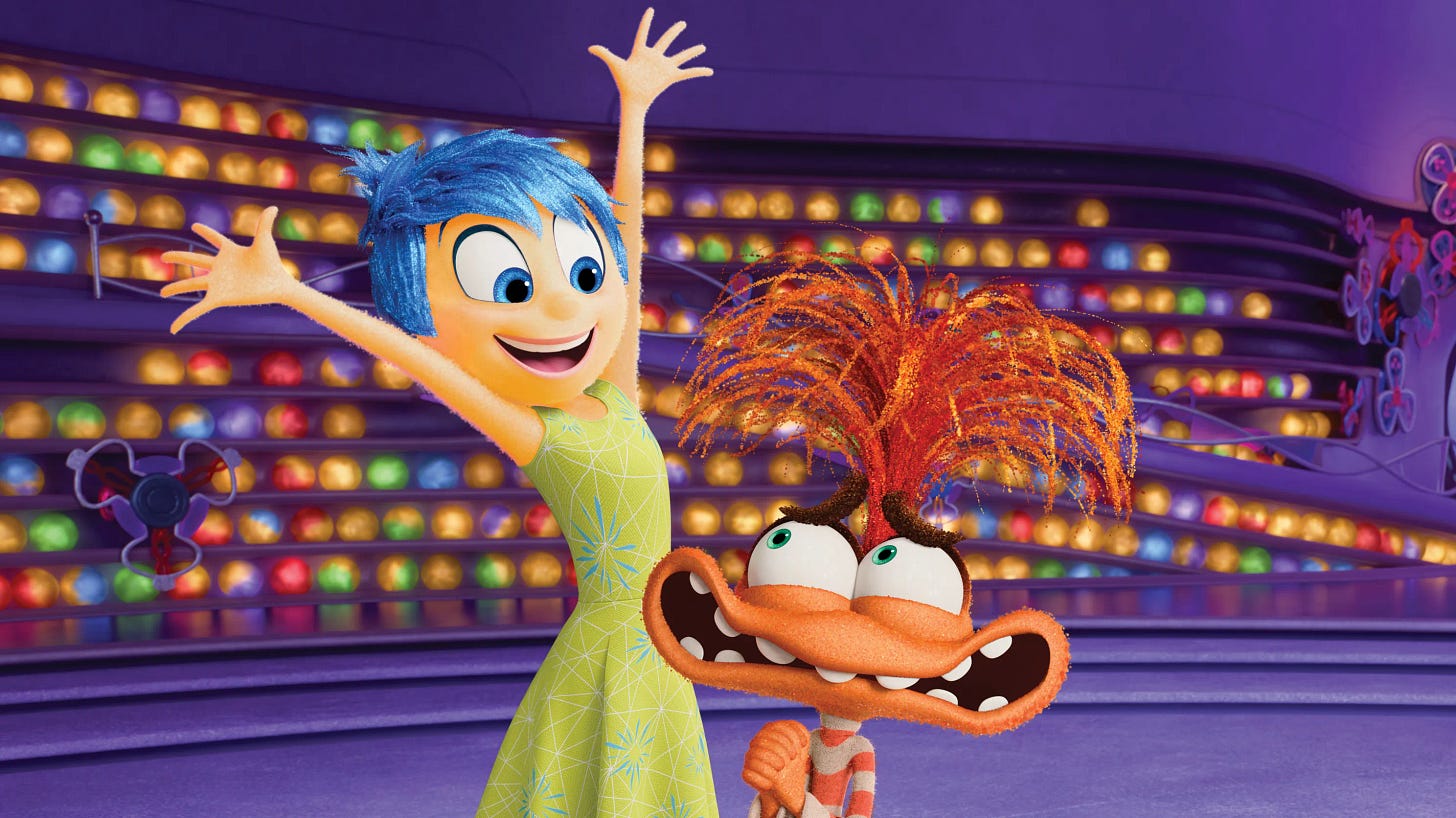In Review: 'Inside Out 2'
Pixar sequels not called 'Toy Story' tend to offer diminished returns. Its new one continue the pattern.
Inside Out 2
Dir. Kelsey Mann
96 min.
The original Inside Out pinpointed, with tear-wrenching accuracy, the moment in a little girl’s life when she develops a more sophisticated suite of emotions and memories, something beyond the base responses of a small child who seeks joy—and suppresses any feelings that might complicate it. (That’s the parents’ fault, to a large degree: We’re guilty of managing our child’s emotions as closely as what they put in their lunchbox or the clothes they wear in the morning.) One of the more beautiful and audacious elements of Inside Out is the argument it makes for the importance of sadness in helping humans process the world. When Joy (Amy Poehler) stops trying to suppress Sadness (Phyllis), certain memories turn achingly bittersweet and Riley, the film’s plucky young protagonist, becomes a more sensitizing and empathetic being. Just hearing the notes from Michael Giacchino’s score over the Disney logo for the sequel puts a Pavlovian lump in the throat.
Yet even the relative simplicity of Riley’s pre-pubescent mind—a console with five emotions, plus the storage centers of long- and short-term memories, the various personality “islands,” and spaces for abstract thought, dream production, and streams of consciousness—required a Charlie Kaufman-esque conceptual architecture. Inside Out ended with an expansion of Riley’s console with the onset of puberty and it was almost a relief that we didn’t have to learn how it worked, only that she had gracefully transitioned to a new stage of development. It isn’t normal to get two coming-of-age comedies about the same character, but now Inside Out 2 revisits Riley’s mind where the first film left off and it’s awfully crowded in there. The sequel has the odd effect of seeming hectic and overly complicated while also being punier in scope. The Pixar machine has become woefully inefficient.
The dramatic stakes are much smaller, which is part of the point, but only to a certain extent. In the first film, Riley’s shifting mood is triggered by a move from Minnesota to San Francisco, where she has trouble adjusting to a strange place without her friends or the comforting familiarity of home. Here, the now 13-year-old Riley (Kensington Tallman) goes to a three-day hockey camp and experiences her fair share of social miscues. Early on, she learns that her two closest friends are attending a different high school, so she’s alone on a mission to make the varsity hockey team and befriend the cool older girls who would be her teammates. Joy isn’t the dominant emotion here and neither is Sadness, and there are only fitful places for Anger (Lewis Black), Disgust (Liza Lapira), and Fear (Tony Hale). That leaves a quartet of new puberty-driven feelings to assert themselves, chiefly Anxiety (Maya Hawke), with support from Envy (Ayo Edebiri), Embarrassment (Paul Walker Hauser), and Ennui (Adele Exarchopoulos).
Inside Out 2 comes up with new metaphysical concepts, too, like Riley’s Sense of Self, a network of feelings and memories that winds its many tendrils into a glowing tree that’s more like porcelain than oak. The metaphor works to a point—a 13-year-old’s sense of self is indeed fragile—but it’s not as if more of this sort of thing is needed. The one genuinely funny idea is a crude catapult Joy develops to jettison unpleasant moments to the back of Riley’s mind, and Inside Out 2 can use all the laughs it can get. Though the expanded cast can get burdensome, it does help the film score on the margins, like the occasional appearance of Nostalgia (June Squibb), a little old lady who reminisces prematurely, or Bloofy (Ron Funches) and Pouchy (James Austin Johnson), a 2-D duo from a much younger Riley’s favorite TV show. (If Pixar ever makes a buddy movie pairing Pouchy with Forkie from Toy Story 4, it could save the company.)
Though Anxiety is a spritely little troublemaker that pings well off the other emotions, Inside Out 2 is missing the depth of feeling that defined the first one. Ironically, it seems tailored more to a younger audience despite being about a character who’s getting older. The film’s one great insight is how anxiety can amplify minor social interactions and miscues into full-blown crises, even though the stakes are relatively low. But it also happens to occupy the same basic adolescent terrain as the superior Turning Red, which doesn’t lean on such elaborate mechanics in order to process a similar array of feelings. It’s hard not to see the gummed-up scaffolding of Inside Out 2 as a metaphor for Pixar itself, which used to make the impossible look easy but now labors visibly for less. — Scott Tobias




I thought it hit. There were good laughs, quick wit, the story moved along despite plenty of places it could have gotten stuck. I was intrigued throughout and was surprised it was over - felt fast to me.
The only good thing about this review is that it lowered my expectations which made me appreciate the movie even more. I struggle to understand how you think this movie was for a younger audience.